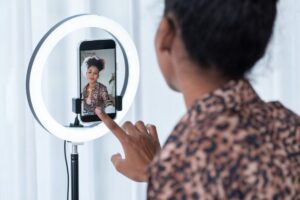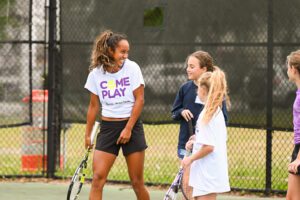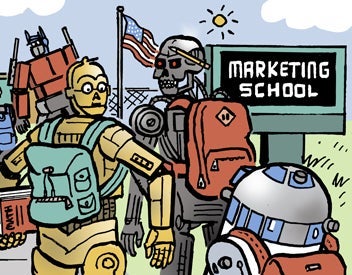
Burger King is changing the game. It has transformed what had been a series of production heavy, costly basketball events targeting young African American males into a nimble, mobile vehicle campaign that reaches these young people when and where they play the game.
The changes allow Burger King to reach into community sports centers in 41 cities, as opposed to just the 13 markets it had produced events in. A digital component offers information about the tour and a space where video footage of young, skilled basketball players encountered on the local courts is featured, along with other content collected on the road.
“With this tour, we’re providing consumers with broad-based access to what’s happening not just on the court, but also in urban communities across the U.S.,” Alexandra Galindez, the director of multi-cultural marketing at Burger King, said. “Very few brands are gathering content from a specific segment to be shared with a specific segment. The guy in Atlanta can see a little bit about the basketball lifestyle in Los Angeles; a day in the life of urban communities.”
The goal of the campaign is to drive sales overall, and awareness of the $1 ¼ Pound Double Cheeseburger, added last fall to the dollar menu for a limited time. Approximately 5,000 coupons will be distributed in each of the markets at both the courts and in restaurants with the offers varying depending on the needs of the local franchisees.
The reality TV star, Syrus Yarborough is the face of the campaign. He travels with the bus and makes appearances at local Burger King restaurants that are announced by local radio stations set up in the restaurants.
The tour, which began Feb. 5 in Los Angeles, will make stops in urban areas including Shreveport, LA, Orlando, Savannah, GA and Dayton, OH, before ending May 29 in Kansas City, KS.
In each city, Yarborough and the crew also make stops at the local community centers and courts where young men ages 18 and older are playing basketball. And while management at these locations may know about the arrival of the BK tour bus, the players are often taken by surprise. Selected players perform their “next best move” –named for the title of the tour–which are videotaped, edited on site and loaded to the Web site, http://www.thenextbestmove.com. People who do not attend the events can submit a video of their moves at the site. A public vote will take place, with one semi-finalist in each market moving on to compete against top-ranked players across the U.S. for $10,000 and to be featured in a basketball lifestyle magazine or Web site.
Another mission of the tour, which is handled by Legacy Marketing Partners, Burger King’s experiential agency of record, is to ask around among the players to find and profile on the Web site someone who has a strong community spirit and participates actively in improving the neighborhood. Burger King’s plan is to offer Web visitors the chance to “get a new, fresh perspective on a variety of charitable community efforts that they can adapt and implement in their hometowns,” Galindez said.
Also at the site, the tour crew will blog about and show other footage from the events, which can be shared through social media sites. The crew will also fan out to visit local attractions, clothing stores and community centers to identify local trends and discover what’s “hot” in each of the 41 markets. The findings will be featured on a special culture section on the site.
“Instead of creating the events and investing in the brick and mortar, we are actually going where the people are playing basketball and using basketball as a cultural entry point because it’s such a part of the urban framework of these consumers that go to Burger King, ” Brian Ferber, account director of Legacy Marketing Partners, said.
In-restaurant merchandising and a digital media buy also support the tour.
To determine the return on investment , the largest in the brand’s history, both pre and post analysis will be completed that includes coupon redemption and how many widgets from the Web site are passed on, Galindez said.
“It’s all about sales,” she said. “We’re looking for a sales lift in cheeseburgers, as well as overall sales.”
The company continues to respond to consumers seeking affordable meals with value promotions like the six-month launch of the $1 1/4 lb. Double Cheeseburger. Last December, Burger King launched a line of holiday greeting cards that gave the recipient a dollar bill to be used to purchase the cheeseburger.
Burger King cited weak consumer spending due to high global unemployment levels as a contributing factor in a 3% drop in quick service traffic in the U.S. in the quarter ended November 2009.


 Network
Network

